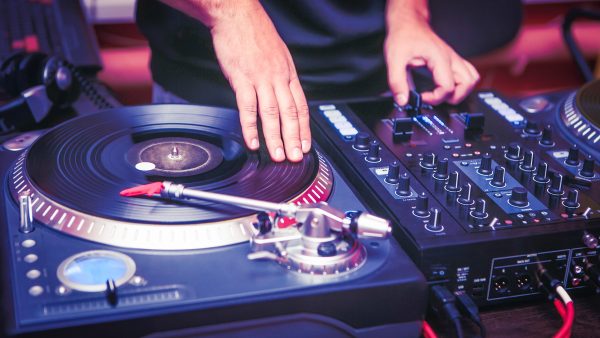Digital Signal Definition
A digital signal translates information using 1s and 0s for reliable data storage in electronics. For example, smartphones use digital signals for communication.
View Lesson on Digital vs. Analog Signals
Become a member to get full access to our entire library of learning videos, reading material, quiz games, simple DIY activities & more.
Become a member to get full access to our entire library of learning videos, quiz games, & more.
Plans & Pricingto watch this full video.

Access All Videos
and Lessons, No Limits.
Access All Videos

No credit card required,
takes 7 sec to signup.
No card required

Ready-to-go lessons
that save you time.
Ready-to-go lessons
If you are on a school computer or network, ask your tech person to whitelist these URLs:
*.wistia.com, fast.wistia.com, fast.wistia.net, embedwistia-a.akamaihd.net
Sometimes a simple refresh solves this issue. If you need further help, contact us.
Digital vs. Analog Signals
Fun Facts
- Digital signals store music as a series of ones and zeros.
- GPS satellites send digital signals to provide accurate location data.
- Hard drives store data as magnetized or demagnetized areas representing 1s and 0s.
Why Do We Need To Know About Digital Signal
Learning about digital signals helps us understand how things like phones, the internet, and storing information work. Digital signals use a series of ones and zeros, which helps messages travel far without losing quality. This is why we can explore space, listen to clear music, and use GPS accurately.
These signals are also why our smartphones and Wi-Fi are so good at keeping us connected. In the world of making software, digital signals are important because they help build and keep up all the apps and websites we use, leading to lots of jobs.
Frequently Asked Questions
Check out the Full Lesson on Digital vs. Analog Signals
In this lesson, we learn that:
- We will learn the difference between analog and digital signals.
- All electronics send and store information as a series of 1s and 0s.
- Digital signals are a more reliable way to send and store information.
Related Topics
- Absorbency Definition
- Analog Signal Definition
- Binary Code Definition
- Biotechnology Definition
- Carbon Dioxide Definition
- Computer Programming Definition
- Definition Of Evidence
- Definition Of Science
- Digital Signal Definition
- Distillation Definition
- Electric Charge Definition
- Energy Transfer Definition
- Engineer Definition
- Engineering Design Process Definition
- Generator Definition
- Geologic Processes Definition
- Germination Definition
- Greenhouse Effect Definition
- Hearing Definition
- Inherited Traits Definition
- Internal Structures Definition
- Landslide Definition
- Larvae Definition
- Liquid Definition
- Liquid Nitrogen Definition
- Magnetic Field Definition
- Marsupial Definition
- Material Definition
- Motion Definition
- Natural Disaster Definition
- Newton’s 1st Law Of Motion Definition
- Nucleus Definition
- Pattern Definition
- Period Definition
- Phases Of The Moon Definition
- Photosynthesis Definition
- Reflecting Surface Definition
- Renewable Resource Definition
- River Definition
- Seeing Definition
- Simple Machines Definition
- Symbiosis Definition
- Tectonic Plates Definition
- Thermal Energy Definition
- Tissue Definition
- Transverse Wave Definition
- Water Erosion Definition
- Water Quality Definition


Start a Free Trial Today. Get a $5 Amazon Gift Card!
Teachers! Start a free trial & we'll send your gift card within 1 day. Only cards left. Try it now.
Select Grade
Select Subject
This email is associated with a Science Kit subscription. Kit subscriptions are managed on this separate page: Manage Subscription

-
Download InvoiceScience & Math$/yr
-
Download InvoiceScience Only$/yr

access all lessons
• No credit card required •
"My students loved the videos. I started the video subscription in May and used them as a review before the state test, which I know contributed to 100% of my class passing the state test."
Rhonda Fox 4th Grade Teacher, Ocala, Florida
Use Generation Genius in Your School
Access all lessons free for 30 days.
"My students loved the videos. I started the video subscription in May and used them as a review before the state test, which I know contributed to 100% of my class passing the state test."
Rhonda Fox 4th Grade Teacher, Ocala, Florida
• No credit card required •
Already a member? Sign In
* no credit card required *

* no credit card required *
* no credit card required *

Get District Quote
Discounts start at 3 schools.
Sent!
Thank you for your inquiry.
We will email you a quote as soon as we can.

to Discover the Benefits of Generation Genius
Learn How to Save for Your School & District!
Please login or create an account to access additional resources

no credit card required
Skip, I will use a 3 day free trial
Enjoy your free 30 days trial
-
Unlimited access to our full library
of videos & lessons for grades K-5. -
You won’t be billed unless you keep your
account open past your 14-day free trial. -
You can cancel anytime in 1 click on the
manage account page or by emailing us.
-
Unlimited access to our full library of videos & lessons for grades K-5.
-
You won't be billed unless you keep your account open past 14 days.
-
You can cancel anytime in 1-click on the manage account page.
Cancel anytime in 1-click on the manage account page before the trial ends and you won't be charged.
Otherwise you will pay just $10 CAD/month for the service as long as your account is open.
Cancel anytime on the manage account page in 1-click and you won't be charged.
Otherwise you will pay $10 CAD/month for the service as long as your account is open.
We just sent you a confirmation email. Enjoy!
Done



























































































































 GENERATION GENIUS
GENERATION GENIUS